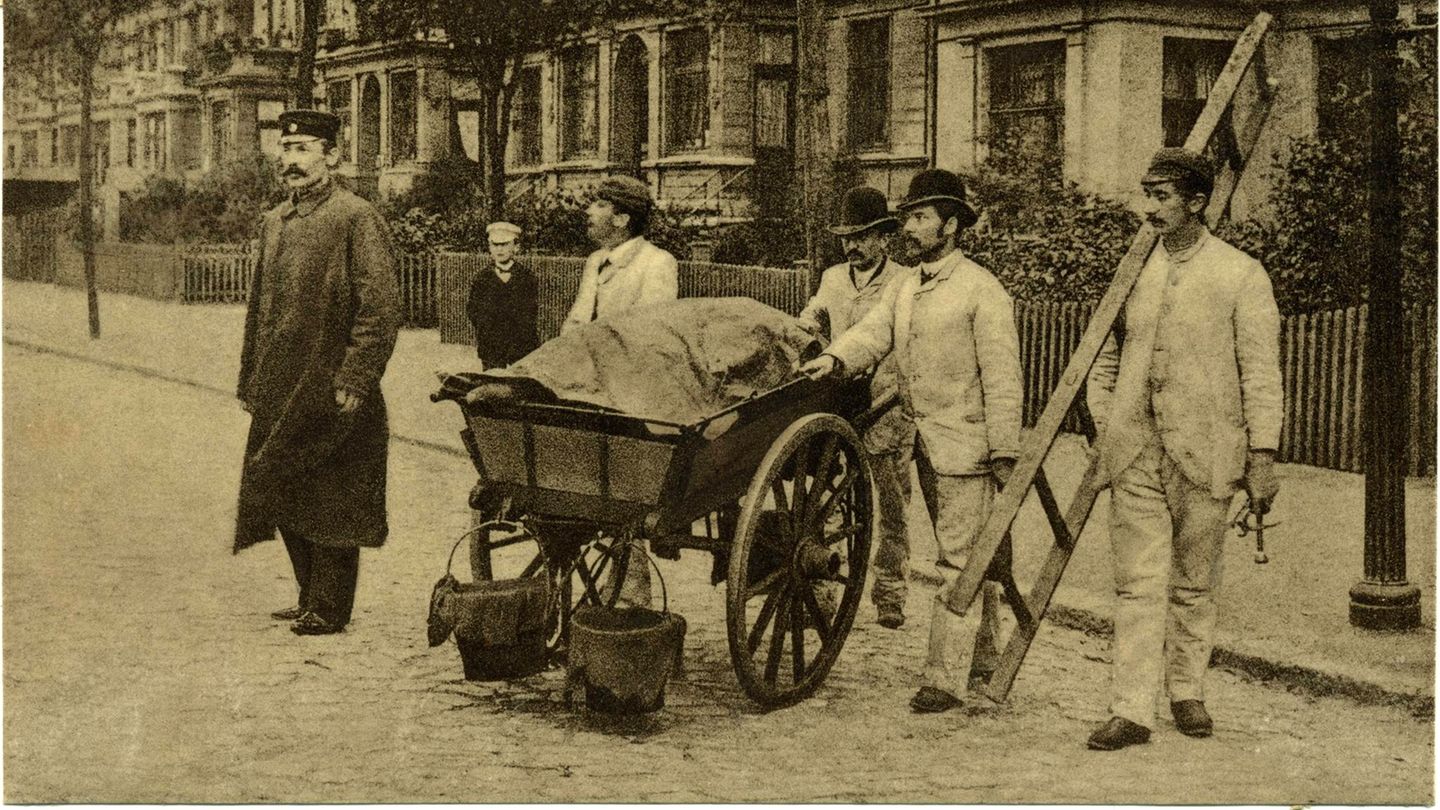Worse than the plague – the great cholera epidemic raged in Hamburg. Almost 9,000 people died – also because the city underestimated the disease for a long time. And the dirty slums offered a perfect breeding ground for the disease.
It was Saturday, August 13th, 1892, Hamburg was working on the sewer with around 80 colleagues. On Sunday he complained of vomiting and diarrhea. On Monday he was dead. On Tuesday another worker, the journeyman bricklayer Kähler, died in the Eppendorfer hospital. A day later, four more men fell ill. At that time they all toiled at a large filter plant that was supposed to purify the drinking water from the Elbe. Because the city’s wastewater was simply channeled into the Elbe. But before this much-needed facility was completed, cholera broke out.
The plague was nothing new to the Hanseatic League. The city had to grapple with the disease as early as 1831, 1866 and 1873. But in the very hot and dry summer of 1892, thousands were to die of the disease.
Cholera 1982 in Hamburg
But initially the city took no action. The deaths at the port haunted the streets as rumors. Cholera should rage again. A ship carpenter and a cigar worker from St. Pauli were among the dead, it was said. Today nobody knows how exactly the order of deaths is. Sick sailors could have left Hamburg by ship without anyone taking notice of them. And deaths in the densely built-up areas by the port have hardly been investigated. The cause of death was then simply “emaciation” – a term behind which malnutrition, but also cancer – or cholera – could hide.
n: “In the last few days there have been repeated deaths. These were officially attributed, at least on Saturday, to cholerins or, as they also say, cholera nostras. The rapid course of the disease was of course suspicious. On the other hand, it reappeared The fact reassuring (!) That the 26 cases of illness () reported so far did not occur in one and the same area, but at various points in the city, while a real epidemic usually starts from one center and spreads from there.” “Cholerine cases” occur in the hot season, according to the foreign newspaper. No reason to worry. On August 20, the medical officer, Dr. Weisser that the disease is dangerous cholera asiatica. The city is still not responding, as of August 23, 450 people had fallen ill and 200 had died.
Cholera – a terrible death
And these deaths were horrific. For hours the bodies emptied of stool and vomit,. They are shaken by cramps and pain, the kidneys fail, the circulation collapses. And then they were soon dead.
What nobody knows at this point in time: the cholera pathogens have long since penetrated the water pipes. The diseases are only the tip of the iceberg – because the following temptation to drink water will shake Hamburg badly.
On August 23, the authorities issued an epidemic alarm. Old carriages are bought up, the upholstery is torn out and converted into makeshift ambulances. Sick people who have cholera symptoms are to be transferred to the hospitals in Eppendorf and Lohmühlenstrasse. Pavilions were set up there to minimize contamination. Doctors have to fill out red forms, called cholera lists, for their patients in order to report them to the authorities. The newspapers print the number of illnesses and deaths every day.
Instructions are posted on advertising pillars to bring people closer to the basics of disinfection. A pathetic attempt, certainly well-intentioned – and yet ineffective. Because cholera rages above all in the slums. Robert Koch, who discovered the cholera bacillus, was sent to Hamburg from Berlin to get an idea of the epidemic. And what he saw shocked him deeply: “I have never encountered such unhealthy apartments, plague caves and breeding grounds for every germ of infection as in the so-called Gängeviertel that I was shown, at the port, on Steinstrasse, in Spitalerstrasse or on Niedernstrasse. ” And sums it up in his letter to the Kaiser: “I forget that I am in Europe.”
Tiny backyards and narrow streets
Because what he saw were habitats that fueled the outbreak of a major epidemic. A few years earlier, around 24,000 dock workers had lost their apartments without replacement to make way for the construction of the Speicherstadt. In order to continue to live close to the port – and thus to the workplace – they had to find shelter in tiny backyards and narrow streets in the new and old town. Septic tanks and chamber pots were more common here than water closets, and cholera could spread in the densely built up narrow corridors. The hygienic standards fueled the spread of the disease. Disinfection troops, mobile cookshops to supply people with unpolluted food and pump trucks with water could not change this either.
Whoever could left the city. So life in the Hanseatic city comes to a standstill. The trade is stopped, schools close – and nothing works at the port either. The now unemployed dock workers quickly find new employment: they have to dig graves at the Ohlsdorf cemetery. More than 400 people had to be buried on August 27th alone. “You have no idea how the black death rules here”, “Shouting, the medical officers are all drunk, raw; the carcass is torn out of the houses, some medical officers blow up large quantities of chlorinated lime with large painters’ tassels, whether on the dead or the sick.” In fact, drunk people lurch around on the streets, because it is believed that alcohol protects against infection.
How Hamburg reacted to the epidemic
Historians largely agree on why the disease was able to spread so rapidly in the city. Eastern European emigrants are said to have unwittingly carried the dangerous disease in their luggage. At that time, thousands of Russian migrants left the Tsarist empire and wanted to go to the USA – and boarded the transatlantic ships in Hamburg. But before they crossed the ocean, the migrants waited in wooden barracks without hygienic standards or looked for quarters near the port. This is probably how the cholera pathogen got into the Elbe water.
Ten weeks the disease wiped out the hamburgers due to the epidemic. And the city reacted: A filter plant for water from the Elbe was completed in 1893, a waste incineration plant followed and e. New building laws are also intended to prevent such a drama from repeating itself.




